Abstract
Antibodies were raised against Saccharomyces cerevisiae a-cells that had been exposed to the sex pheromone, alpha-factor. After adsorption of the antiserum with diploid cells, antibodies remained that reacted specifically with the mannan from haploid cells. The characteristic determinant was observed in mannan from pheromone-treated a-cells, in mannan from untreated alpha-cells, and at a much lower concentration, in mannan from control a-cells. The antigens from these three mannans appeared to be identical. The determinant was destroyed by mild-acid hydrolysis or periodate oxidation, but not by proteolysis or digestion with exo-alpha-mannanase. Mutants with altered mannan were unable to express the antigen. Complete acid hydrolysates mannan from alpha-factor-treated a-cells contained mannose, glucose, and N-acetylglucosamine. Partial acid hydrolysis, under conditions that destroyed the antigenic determinant, released only mannose and mannobiose. The mannose fraction was labeled to high specific activity during response of a-cells to alpha-factor if radioactive glucose was the carbon source. Neither alpha- not beta-D-mannopyranosyl phosphate was a hapten. The results are consistent with the presence of a haploid-specific antigen containing an acid-labile mannose determinant and show that the amount of this antigen in a-cell mannan is increased in response to alpha-factor.
Full text
PDF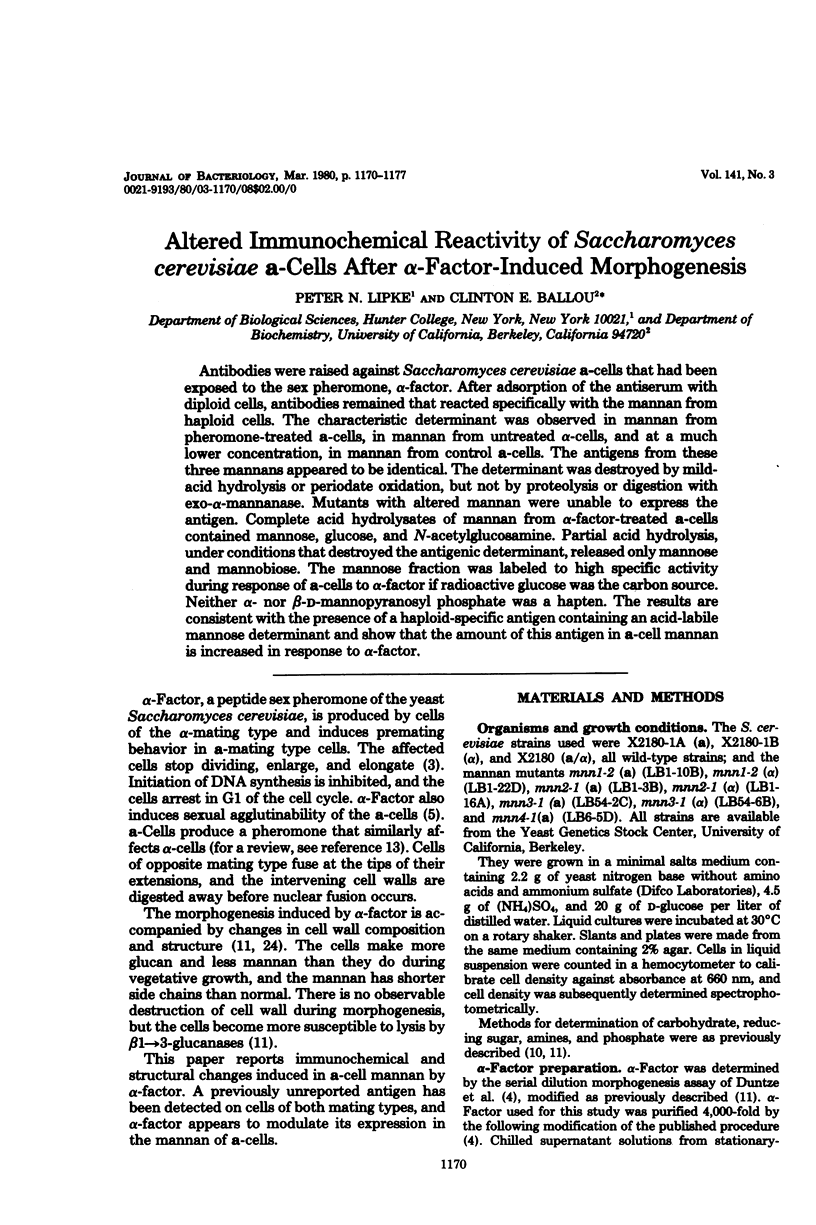
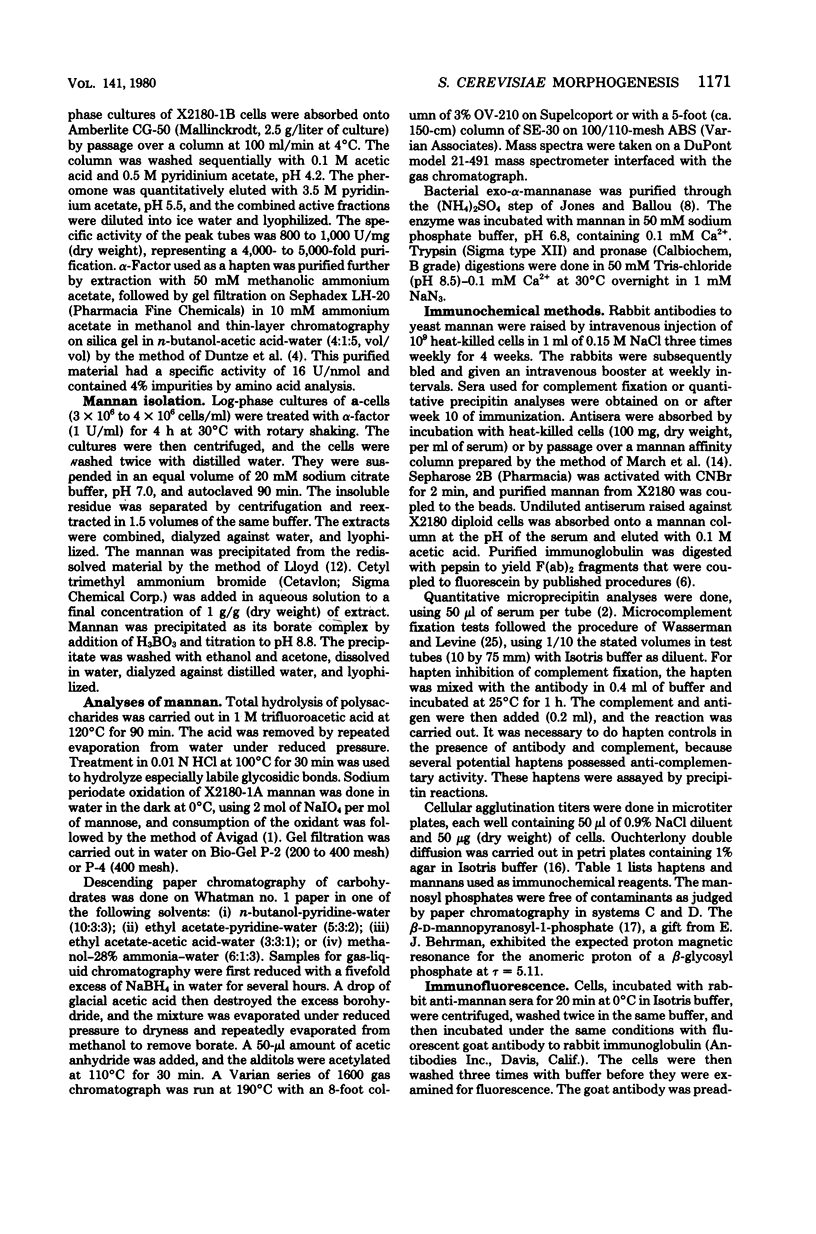
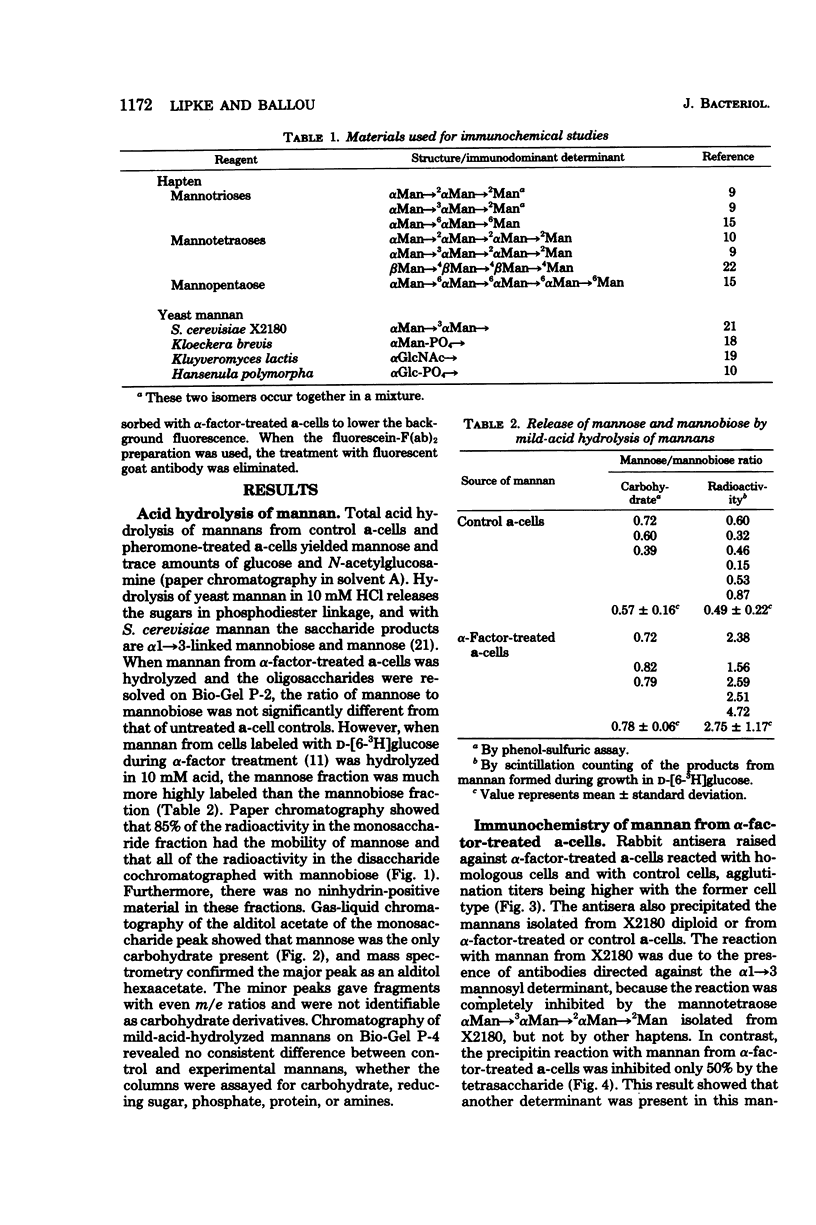
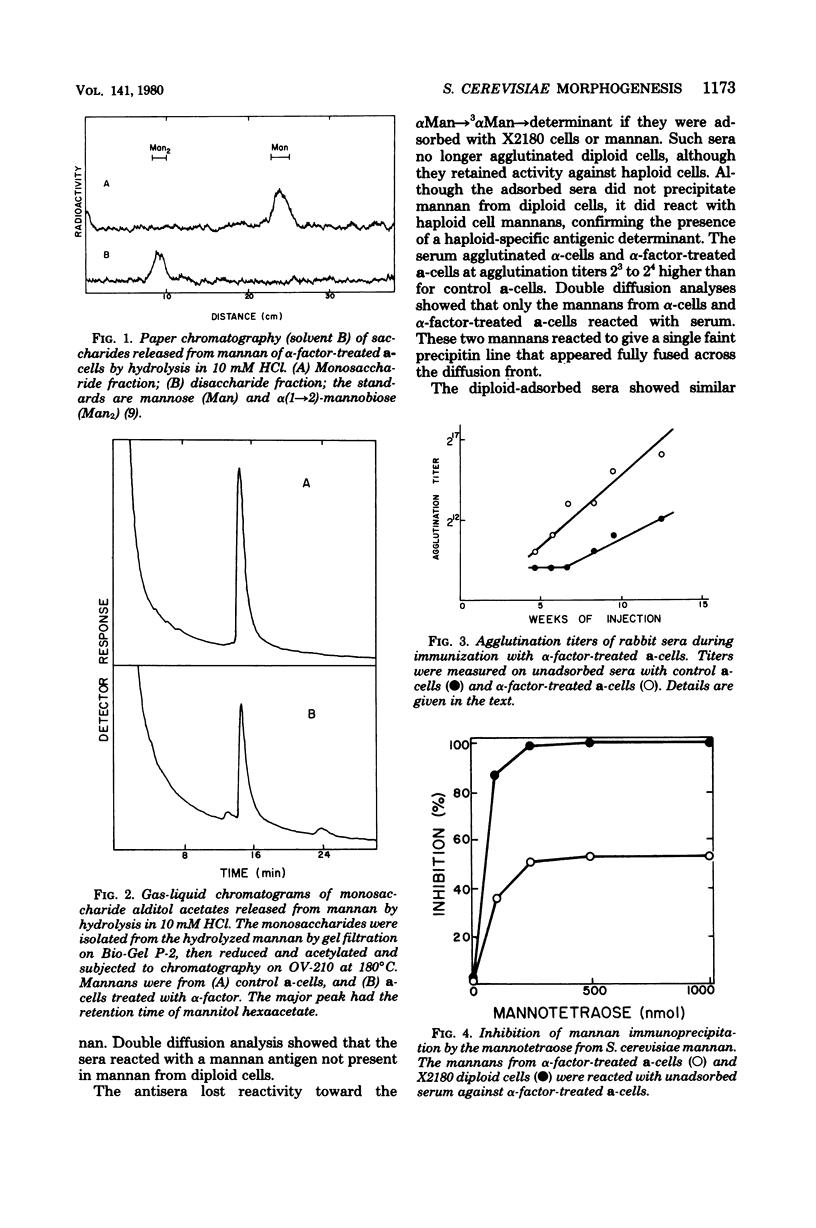
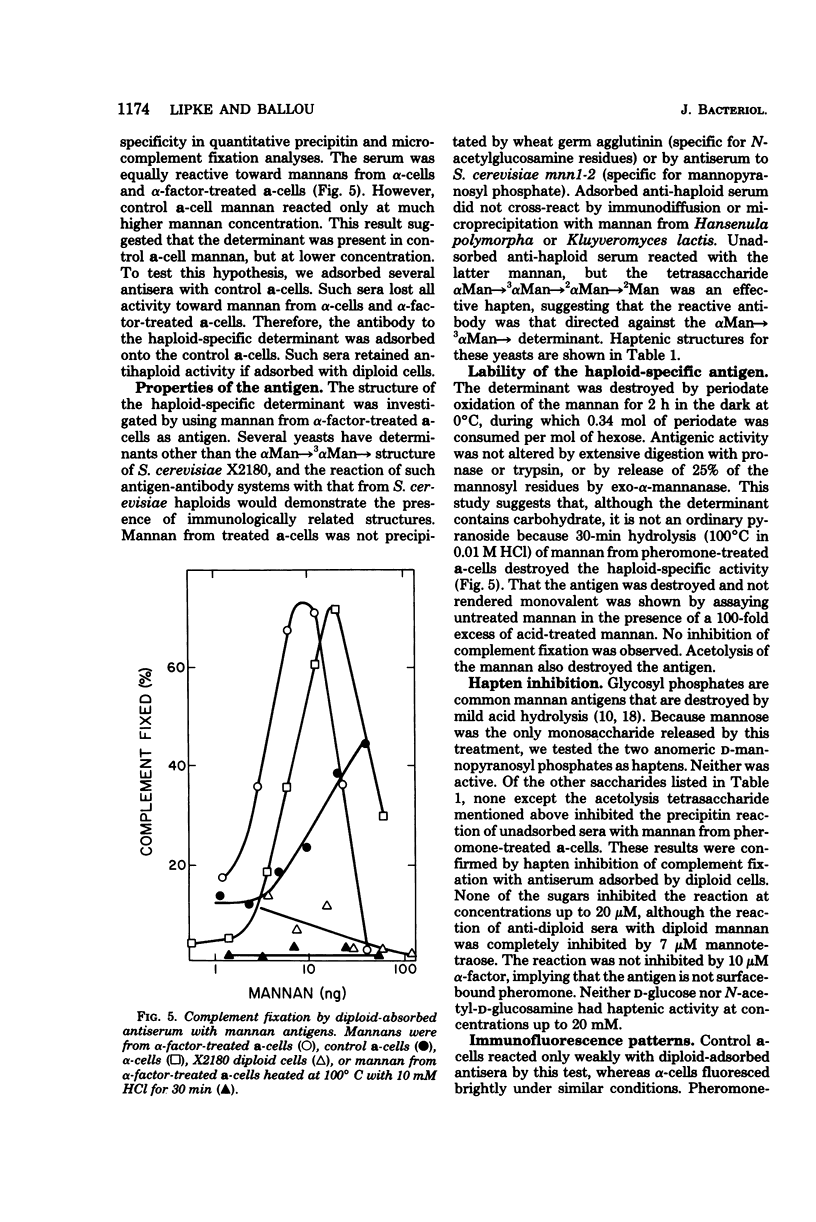
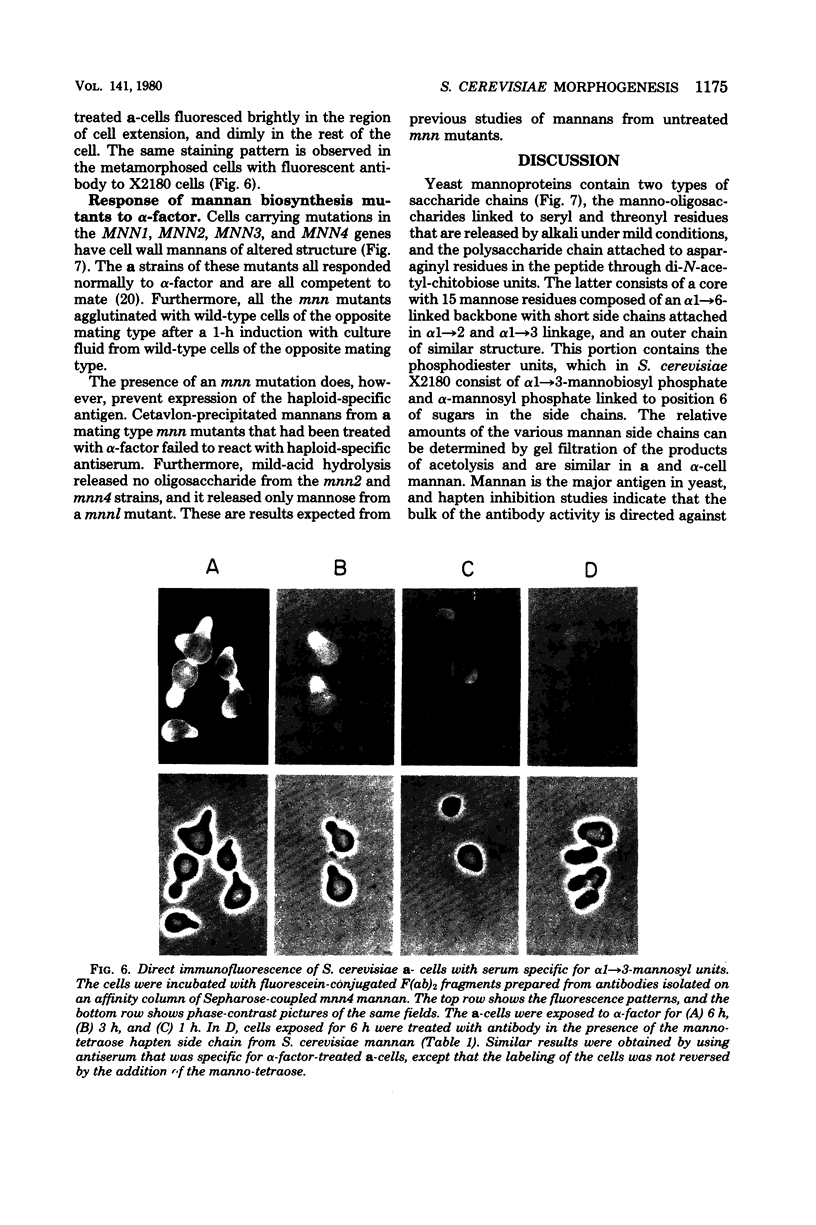
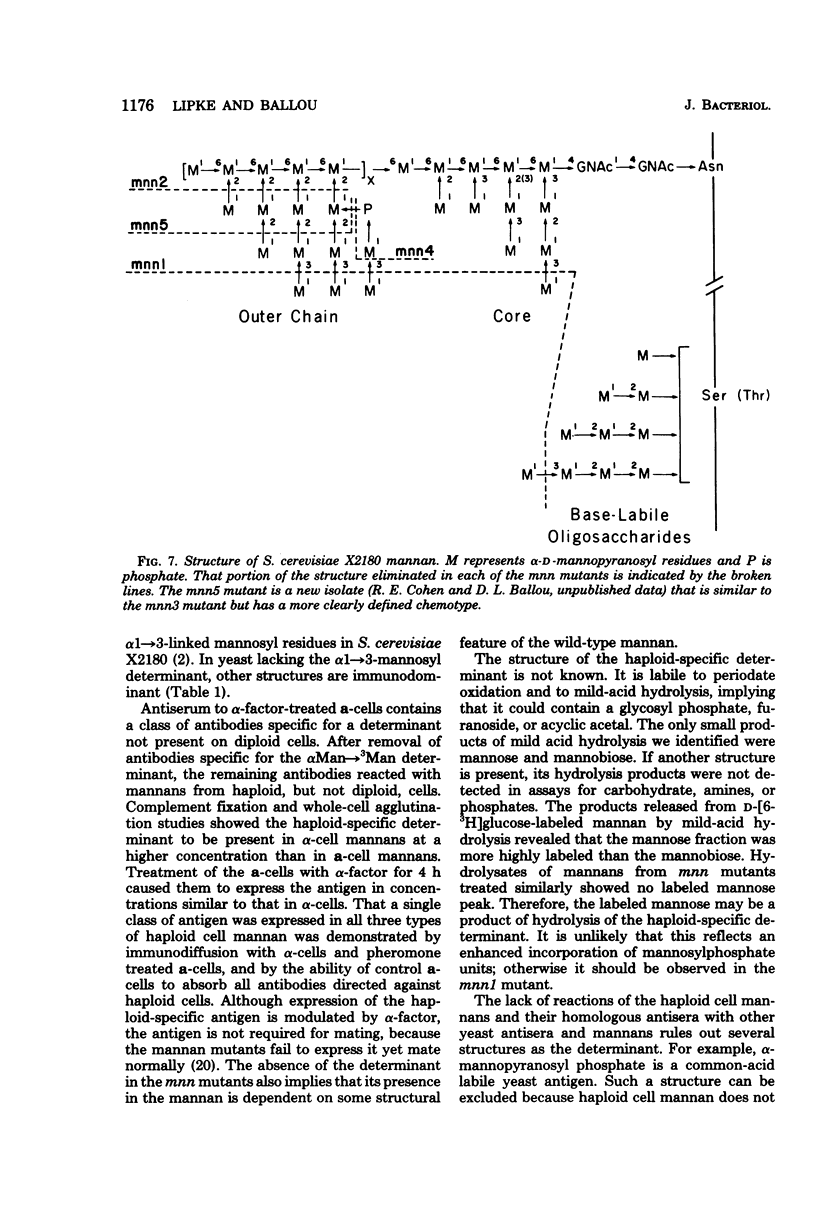
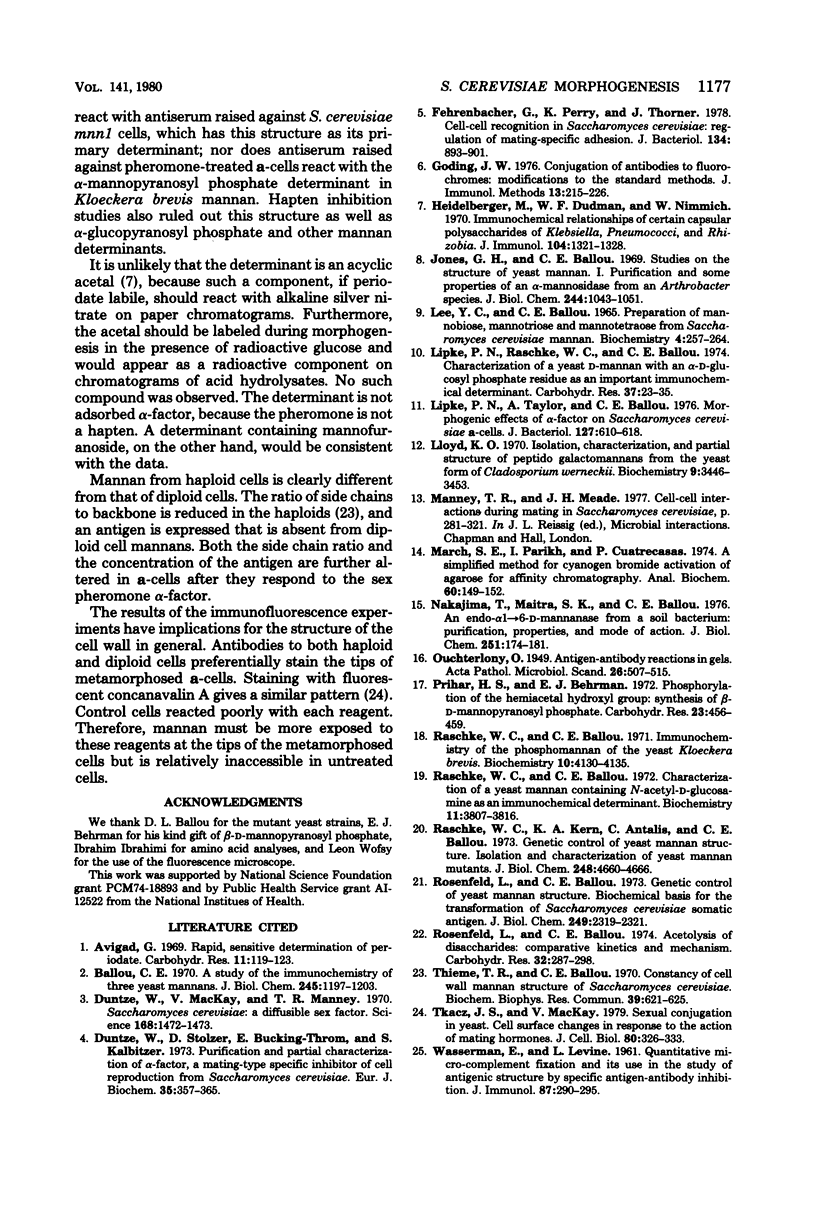
Images in this article
Selected References
These references are in PubMed. This may not be the complete list of references from this article.
- Ballou C. E. A study of the immunochemistry of three yeast mannans. J Biol Chem. 1970 Mar 10;245(5):1197–1203. [PubMed] [Google Scholar]
- Duntze W., MacKay V., Manney T. R. Saccharomyces cerevisiae: a diffusible sex factor. Science. 1970 Jun 19;168(3938):1472–1473. doi: 10.1126/science.168.3938.1472. [DOI] [PubMed] [Google Scholar]
- Duntze W., Stötzler D., Bücking-Throm E., Kalbitzer S. Purification and partial characterization of -factor, a mating-type specific inhibitor of cell reproduction from Saccharomyces cerevisiae. Eur J Biochem. 1973 Jun;35(2):357–365. doi: 10.1111/j.1432-1033.1973.tb02847.x. [DOI] [PubMed] [Google Scholar]
- Fehrenbacher G., Perry K., Thorner J. Cell-cell recognition in Saccharomyces cerevisiae: regulation of mating-specific adhesion. J Bacteriol. 1978 Jun;134(3):893–901. doi: 10.1128/jb.134.3.893-901.1978. [DOI] [PMC free article] [PubMed] [Google Scholar]
- Goding J. W. Conjugation of antibodies with fluorochromes: modifications to the standard methods. J Immunol Methods. 1976;13(3-4):215–226. doi: 10.1016/0022-1759(76)90068-5. [DOI] [PubMed] [Google Scholar]
- Heidelberger M., Dudman W. F., Nimmich W. Immunochemical relationships of certain capsular polysaccharides of Klebsiella, pneumococci and Rhizobia. J Immunol. 1970 Jun;104(6):1321–1328. [PubMed] [Google Scholar]
- Jones G. H., Ballou C. E. Studies on the structure of yeast mannan. I. Purification and some properties of an alpha-mannosidase from an arthrobacter species. J Biol Chem. 1969 Feb 10;244(3):1043–1051. [PubMed] [Google Scholar]
- Lipke P. N., Raschke W. C., Ballou C. E. Characterization of a yeast D-mannan with an alpha-D-glucosyl phosphate residue as an important immunochemical determinant. Carbohydr Res. 1974 Oct;37(1):23–35. doi: 10.1016/s0008-6215(00)87062-7. [DOI] [PubMed] [Google Scholar]
- Lipke P. N., Taylor A., Ballou C. E. Morphogenic effects of alpha-factor on Saccharomyces cerevisiae a cells. J Bacteriol. 1976 Jul;127(1):610–618. doi: 10.1128/jb.127.1.610-618.1976. [DOI] [PMC free article] [PubMed] [Google Scholar]
- Lloyd K. O. Isolation, characterization, and partial structure of peptido galactomannans from the yeast form of Cladosporium werneckii. Biochemistry. 1970 Aug 18;9(17):3446–3453. doi: 10.1021/bi00819a025. [DOI] [PubMed] [Google Scholar]
- March S. C., Parikh I., Cuatrecasas P. A simplified method for cyanogen bromide activation of agarose for affinity chromatography. Anal Biochem. 1974 Jul;60(1):149–152. doi: 10.1016/0003-2697(74)90139-0. [DOI] [PubMed] [Google Scholar]
- Nakajima T., Maitra S. K., Ballou C. E. An endo-alpha1 leads to 6-D-mannanase from a soil bacterium. Purification, properties, and mode of action. J Biol Chem. 1976 Jan 10;251(1):174–181. [PubMed] [Google Scholar]
- Raschke W. C., Ballou C. E. Characterization of a yeast mannan containing N-acetyl-D-glucosamine as an immunochemical determinant. Biochemistry. 1972 Sep 26;11(20):3807–3816. doi: 10.1021/bi00770a021. [DOI] [PubMed] [Google Scholar]
- Raschke W. C., Ballou C. E. Immunochemistry of the phosphomannan of the yeast Kloeckera brevis. Biochemistry. 1971 Oct 26;10(22):4130–4135. doi: 10.1021/bi00798a018. [DOI] [PubMed] [Google Scholar]
- Raschke W. C., Kern K. A., Antalis C., Ballou C. E. Genetic control of yeast mannan structure. Isolation and characterization of mannan mutants. J Biol Chem. 1973 Jul 10;248(13):4660–4666. [PubMed] [Google Scholar]
- Rosenfeld L., Ballou C. E. Genetic control of yeast mannan structure. Biochemical basis for the transformation of saccharomyces cerevisiae somatic antigen. J Biol Chem. 1974 Apr 10;249(7):2319–2321. [PubMed] [Google Scholar]
- Thieme T. R., Ballou C. E. Constancy of the cell wall mannan structure of Saccharomyces cerevisiae. Biochem Biophys Res Commun. 1970 May 22;39(4):621–625. doi: 10.1016/0006-291x(70)90249-4. [DOI] [PubMed] [Google Scholar]
- Tkacz J. S., MacKay V. L. Sexual conjugation in yeast. Cell surface changes in response to the action of mating hormones. J Cell Biol. 1979 Feb;80(2):326–333. doi: 10.1083/jcb.80.2.326. [DOI] [PMC free article] [PubMed] [Google Scholar]
- WASSERMAN E., LEVINE L. Quantitative micro-complement fixation and its use in the study of antigenic structure by specific antigen-antibody inhibition. J Immunol. 1961 Sep;87:290–295. [PubMed] [Google Scholar]



